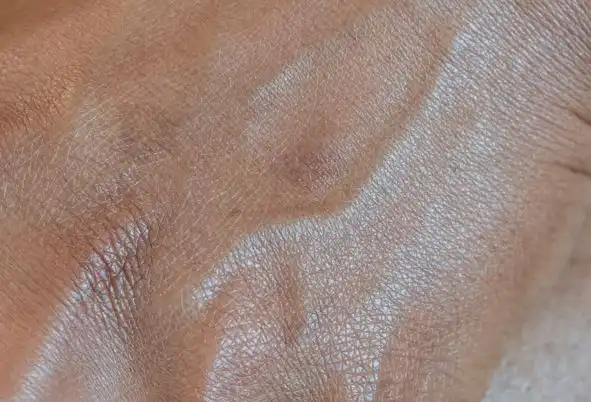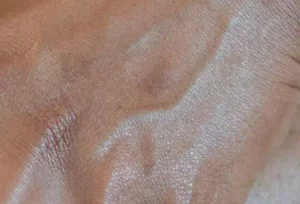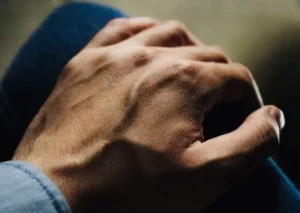Vein mapping, also called venous mapping or vascular ultrasound, is when an ultrasound technician uses ultrasound imaging to look at the inside of your blood vessels. Healthcare providers use this type of test to assess blood flow and circulation, and check for blockages in the arteries or veins that could cause venous insufficiency or other kinds of health conditions concerning the blood vessels. Vein mapping can.
Ultrasound Test for Vein Mapping
This specific kind of ultrasound test can take anywhere from a half hour to an hour and a half, depending which part of the body is undergoing the procedure. The test requires no prep, i.e., you do not need to fast or drink any kind of special fluids before your appointment. There is nothing to worry about when undergoing a test like this one. It is not painful or uncomfortable. There is no surgical incision or needles, no radiation, no anesthesia, and no side effects.
The ultrasound machine works because of sound wave transmission instead of anything invasive. The sound waves become visible pictures of the blood vessels and show your healthcare provider a clear picture of what is going on in the vascular system. Vein mapping is sometimes required before certain medical procedures that involve the blood vessels.
How does Vein Mapping Works
Vein mapping works for venous insufficiency in that it can help vein doctors confirm a diagnosis if they suspect a patient is suffering from this condition, and start a treatment plan right away. Chronic venous insufficiency occurs when the vein valves of the legs are no longer functioning properly. This means that blood is not circulating the way that it should be, so it begins to pool in the veins and cause swelling, discoloration of the skin, burning or tingling sensations, cramping, aches and feelings of fatigue in the legs, excess itching or flaking skin, varicose veins, leg ulcers or open sores. The most common cause of chronic venous insufficiency is a venous condition known as deep vein thrombosis, which is when a blood clot occurs deep in the vein that damages the vein.
There are different stages of venous insufficiency that depend on the severity of the symptoms. These stages affect when you will be clinically diagnosed by a healthcare provider. To diagnose someone with chronic venous insufficiency, a vein doctor will perform a visual examination, followed by a vein mapping ultrasound test.
Stages of Venous Insufficiency
There are seven stages, ranging from 0 to 6. The most extreme case being an acute/active ulcer in the affected area.
The first three stages are unofficial, undiagnosed venous insufficiency. Stage 2’s biggest feature is varicose veins that are at least 3 millimeters wide. However, just because you will not technically be diagnosed with venous insufficiency at this point, does not mean you should ignore the vein damage you’ve experienced. Left untreated, varicose veins can get worse down the road and eventually turn into a more serious venous insufficiency.
Treatment for chronic venous insufficiency depends on which stage you are in and how severe your symptoms are. The main focus of any treatment plan is to improve the blood flow and circulation, decrease the amount of swelling, heal present ulcers and prevent them from returning.
Making some very important lifestyle changes can help move treatment along and increase the chance for a successful recovery with less risk for symptoms returning in the future. The top three lifestyle changes include physical activity, weight management and maintaining a well balanced diet.
Exercise is one of the most important things to incorporate into your routine in order to treat venous insufficiency. Developing a regular fitness regimen can make a big difference in how well blood flows through the veins. Walking is a great low-impact option because it helps pump blood through the calf muscles and prevents blood from pooling in the leg veins. Exercise is also important because it helps regulate weight. People who are overweight or obese are at high risk for venous insufficiency because that extra weight puts pressure on the veins. Your diet also helps to regulate weight. Stay away from unhealthy fats and excess sodium, and make sure to drink lots of water to stay hydrated.
Additional Treatment Options for Venous Insufficiency
Additional treatment options include medications such as blood thinners or antibiotics to help with infected ulcers or sores, and compression stockings or socks. The team at Fox Vein & Laser Experts will also recommend compression stockings to patients as a preventative measure and also as a post-treatment recovery aide. Compression stockings help promote proper blood flow and circulation and alleviate pain and swelling in the lower extremities.
If you have tried all of these things but your venous insufficiency persists, there are non-invasive procedures that can help. Fox Vein & Laser Experts treat chronic venous insufficiency with sclerotherapy and endovenous laser ablation. These treatments target the affected veins and use either an injected medicated solution (sclerotherapy) or laser energy (endovenous laser ablation) to essentially cause the damaged vein to collapse and seal shut. Blood is then rerouted to healthy veins and treated veins eventually fade away and become healthy new tissue.
Contact us at Fox Vein & Laser Experts
Don’t ignore symptoms that could be signaling that you have chronic venous insufficiency. Dr. Susan B Fox is board certified in the treatment of veins and a vein expert in her field. She and her medical team at Fox Vein & Laser Experts can perform an examination and vein mapping test to determine the condition of your blood vessels, and create a treatment plan to restore your vein health. To schedule a consultation, Call 954-627-1045 or book your appointment online.



